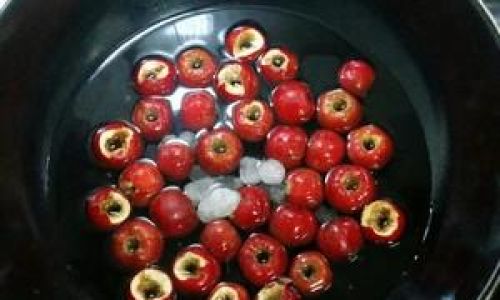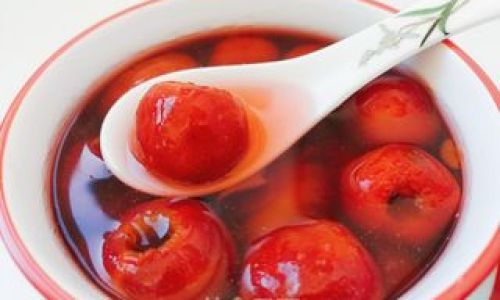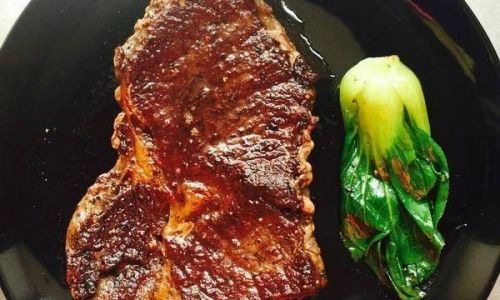Table of content
Hawthorn, a tart and vibrant fruit native to temperate regions, has long been celebrated for its culinary versatility and health benefits. Among its many preparations, hawthorn canned in syrup stands as a beloved traditional treat, balancing sweetness with a refreshing tang. However, a common query among home cooks and preservation enthusiasts revolves around the simmering time required to achieve perfection: Is five minutes enough to transform fresh hawthorn into a shelf-stable, flavorful delight? This article delves into the science, techniques, and nuances of simmering hawthorn canned, exploring whether a brief five-minute simmer suffices or if patience yields superior results.
The Science of Simmering: Why Time Matters
Simmering is a gentle cooking method that uses low, steady heat to soften ingredients, meld flavors, and activate chemical changes. For hawthorn canned, the goal is twofold: to tenderize the fruit’s flesh while preserving its shape and to create a syrup that penetrates the fruit without becoming overly thick or cloying. The simmering time directly impacts these outcomes.
Hawthorn contains pectin, a natural thickening agent found in many fruits. Heat breaks down pectin, releasing gels that thicken the syrup. However, overcooking can destroy pectin’s structure, leading to a runny syrup or mushy fruit. Conversely, undercooking may leave the syrup thin and the fruit too firm, risking spoilage during storage. The challenge lies in finding the sweet spot where texture, flavor, and preservation converge.

Debunking the 5-Minute Myth: Context Matters
The assertion that hawthorn canned requires only five minutes of simmering oversimplifies a nuanced process. While five minutes might suffice in specific scenarios, several variables dictate the ideal simmering time:
-
Fruit Ripeness and Size:
- Riper hawthorn berries are softer and may require less time to tenderize.
- Larger berries or those cut into halves/quarters need longer simmering to ensure even cooking.
-
Stove Type and Heat Distribution:
- Gas stoves provide instant heat adjustments, while electric coils retain warmth longer, potentially accelerating cooking.
- A rolling simmer versus a gentle bubble alters cooking speed.
-
Syrup Consistency:
- A lighter syrup (less sugar) thickens slower, demanding longer simmering.
- High-sugar syrups cook faster but may caramelize if unattended.
-
Altitude and Humidity:
- High-altitude kitchens experience lower boiling points, extending simmering times.
- Humid environments slow evaporation, affecting syrup thickness.
In most cases, five minutes alone cannot address these factors comprehensively. However, it may serve as a final step after initial preparation, such as blanching or partial cooking.
Step-by-Step Guide to Perfect Hawthorn Canned
To determine the optimal simmering time, let’s walk through the entire canning process:

Preparation: The Foundation of Flavor
- Selecting Hawthorn: Choose firm, unblemished berries. Overripe fruit may disintegrate during cooking.
- Cleaning and Prepping:
- Rinse hawthorn under cold water to remove debris.
- Optional: Prick each berry with a needle to prevent bursting during simmering.
Syrup Preparation
- Ratio: A 1:1 ratio of sugar to water (e.g., 1 cup sugar + 1 cup water) creates a balanced syrup.
- Flavor Infusions: Add cinnamon sticks, star anise, or lemon zest for depth.
- Boil the Syrup: Dissolve sugar over medium heat, then reduce to a simmer.
Initial Cooking: Blanching (Optional)
- Blanch hawthorn in boiling water for 1–2 minutes to soften skins.
- Drain and rinse under cold water to halt cooking.
Simmering: The Critical Phase
- Combine hawthorn and syrup in a stainless steel pot.
- Bring to a simmer (not a boil) over medium-low heat.
- Simmering Time:
- 10–15 minutes: Ideal for most recipes. This allows the syrup to penetrate the fruit, soften the flesh, and activate pectin.
- 5 minutes: Use if hawthorn was pre-blanched or if you prefer a firmer texture. However, monitor closely to avoid undercooking.
Testing for Doneness
- Pierce a berry with a fork. It should yield gently without collapsing.
- The syrup should coat the back of a spoon and leave a slow trail when drizzled.
Canning and Storage
- Ladle hot hawthorn and syrup into sterilized jars, leaving ½-inch headspace.
- Wipe rims, seal with lids, and process in a water bath canner for 10–15 minutes (adjust for altitude).
Common Mistakes and How to Avoid Them
-
Overcooking:
- Symptoms: Mushy fruit, overly thick syrup.
- Fix: Reduce heat to a bare simmer; test frequently.
-
Undercooking:
- Symptoms: Firm fruit, thin syrup, potential spoilage.
- Fix: Extend simmering time by 5-minute increments.
-
Uneven Cooking:
- Cause: Overcrowding the pot.
- Fix: Cook in batches; stir gently to ensure even heating.
-
Sugar Crystallization:
- Cause: Rapid cooling or insufficient stirring.
- Fix: Cover the pot during simmering; stir occasionally.
Expert Tips for Enhancing Flavor and Preservation
- Acid Adjustment: Add a splash of lemon juice to balance sweetness and aid preservation.
- Texture Control: For plumper berries, soak hawthorn in a saltwater brine (1 tsp salt/cup water) for 30 minutes before cooking.
- Aromatics: Experiment with vanilla beans, cloves, or ginger for unique flavor profiles.
- Shelf Life: Properly canned hawthorn lasts 12–18 months in a cool, dark place.
The 5-Minute Simmer: When and Why It Might Work
While 10–15 minutes is standard, a five-minute simmer can be effective in specific scenarios:
- Pre-Cooked Hawthorn: If berries were blanched or roasted beforehand.
- High-Sugar Syrup: A thicker syrup reduces cooking time.
- Firm Texture Preference: For a slightly tart, al dente bite.
However, rely solely on five minutes at your peril. Always conduct the fork test and monitor syrup consistency.
Health Benefits of Hawthorn: More Than Just Taste
Beyond its culinary appeal, hawthorn boasts impressive health credentials:

- Rich in Antioxidants: Combats oxidative stress and inflammation.
- Heart Health: May lower blood pressure and improve cholesterol levels.
- Digestive Aid: The fiber content aids digestion and promotes gut health.
Canning preserves these nutrients, making hawthorn canned a guilt-free indulgence.
Conclusion: The Art of Patience
The debate over simmering time underscores a universal truth in preserving: haste often breeds disappointment. While five minutes can suffice under ideal conditions, it’s a gamble. Most recipes err on the side of 10–15 minutes to ensure safety, texture, and flavor harmony.
Ultimately, the “perfect” simmering time is subjective. Adjust based on your equipment, ingredients, and taste preferences. Whether you opt for a quick simmer or a leisurely cook, the result—a jar of glistening hawthorn canned—is a testament to the marriage of tradition and technique. So, the next time you stand over a steaming pot, remember: great things come to those who wait, but greatness can also be hurried with care.
This article navigates the intricacies of simmering hawthorn canned, offering clarity to a question that has long perplexed home cooks. By balancing scientific insight with practical wisdom, it empowers readers to craft a preserve that is as delicious as it is dependable.






0 comments